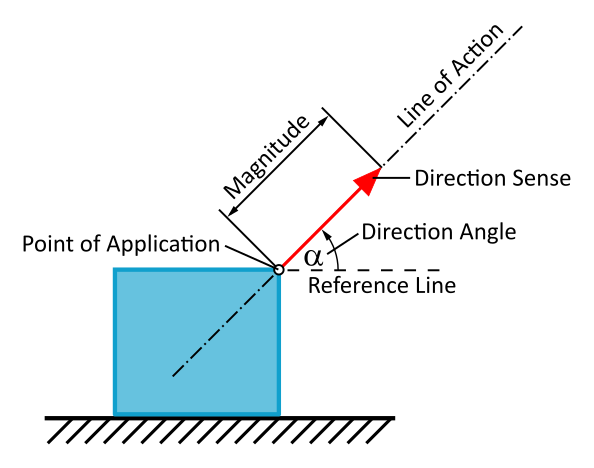1.1 The Force Vector
Hey, do you know this? You're studying mechanics, you're lost in thought, and suddenly you push your tablet or smartphone on the table. Sometimes straight, sometimes at an angle. What happens? Exactly, it moves differently! Crazy, right?
Quite simply: Forces are defined not only by their magnitude but also by their direction and point of application.
You push it several times with a force of the same magnitude:
- If you push it vertically from above, nothing happens. The sack collapses and does not move.
- But if you push it diagonally, it slides in one direction.
- And if you grab it by the corner and pull, it might even tip over!
Do you understand? Forces are like invisible arrows. They have a direction and a point of application. And depending on how you push the small bag, it moves differently.
Physicists call such a force arrow a force vector. It has three important properties:
- Point of application: Where exactly you push the small bag.
- Direction: Where you push, pull, push or lift it.
- Magnitude (size): How hard you push it.

- The length of the arrow indicates the magnitude of the force - just note the scale (e.g. 1 cm ≙ 1 N).
- The beginning of the arrow or the arrowhead (it doesn't really matter) indicates the point of application of the force vector.
-
To define the direction unambiguously, we need two things:
- A direction angle, which is measured counterclockwise from a reference line. It leads to the line of action of the force. This is an imaginary line on which the force vector lies.
- The direction sense on the line of action, represented by the arrowhead.
With force vectors you can now understand all kinds of force effects. Whether it's pushing a box, throwing a ball or driving a car.
By the way: In physics, vectors are often represented by bold letters. So the force vector becomes F, the weight force becomes G and so on.
Sure, sometimes it's helpful to represent forces as arrows or bold letters. But most of the time it's enough to simply use the coordinates or magnitudes of the vectors.
Why? Because it's faster and easier! And besides: Our sketches and drawings show us anyway whether it is a vector.
So, don't panic! Vectors in engineering mechanics are easy.
- Coordinates and magnitudes: Simply use the numbers to describe the force, e.g. \(F = \left(\begin{array}{c} 10~\mathrm{N} \\ 5~\mathrm{N} \\ 0~\mathrm{N} \end{array}\right)\) for a force in x-, y- and z-direction.
- Sketches and drawings: A picture says more than a thousand words! Draw the force as an arrow and you know immediately where it comes from and where it goes.
- Vector notation: Only when it is really important do we use the full vector power with arrows and bold letters.
Off to the outside and explore the world of engineering mechanics!
P.S.: And don't forget: Physics can also be fun!